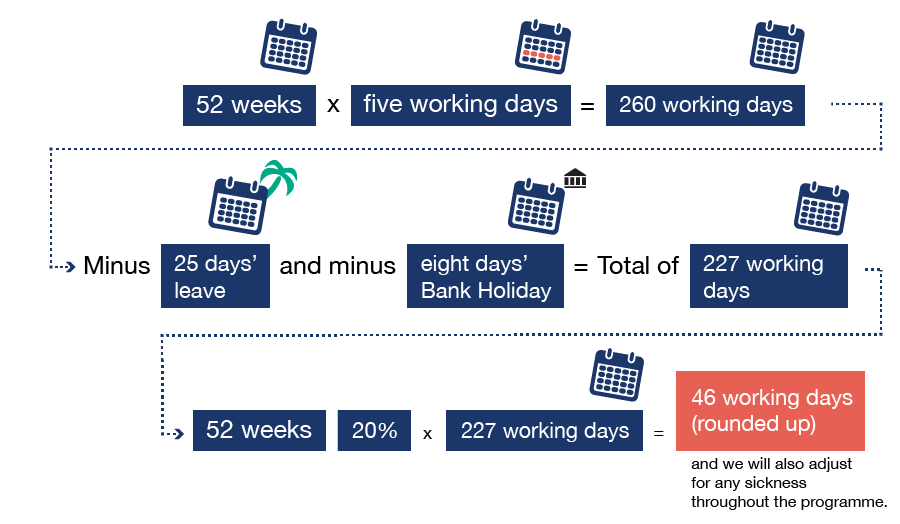What does the 20% off-the-job training mean?
The apprenticeship funding rules require employers and apprentices to commit to apprentices spending a minimum of 20% of their contractual hours, over the duration of the apprenticeship course, undertaking learning. This is defined as: “learning which is undertaken outside of the normal day-to-day working environment and leads towards the achievement of an apprenticeship. This can include training that is delivered at the apprentice’s normal place of work but must not be delivered as part of their normal working duties.”
Learning activities that can count towards the 20% include:
- teaching of theory (for example, lectures and online learning)
- practical training
- time spent writing assessments and assignments
- learning support
- shadowing and mentoring
- industry visits and attendance at skills competitions
Activities that cannot be included are:
- English and maths (up to Level 2), which is funded separately
- progress reviews or on-programme assessment required for an apprenticeship framework or standard (ie assessor/skills coach meetings)
- training, which takes place outside the apprentice’s paid working hours
This off-the-job learning will be supported through a blended learning approach, including online tutorials and webinars, as well as self-directed study to complete assignments, project work, revision and other related learning activities.
This will be discussed with you in detail at the outset.

How is the 20% calculated?
When calculating the 20% off-the-job, we use the approach above as a basis. This takes the total working hours for the apprentice (which should exclude annual leave entitlement and bank holidays) and then calculates what 20% of those hours equate to over the planned duration of the course.
